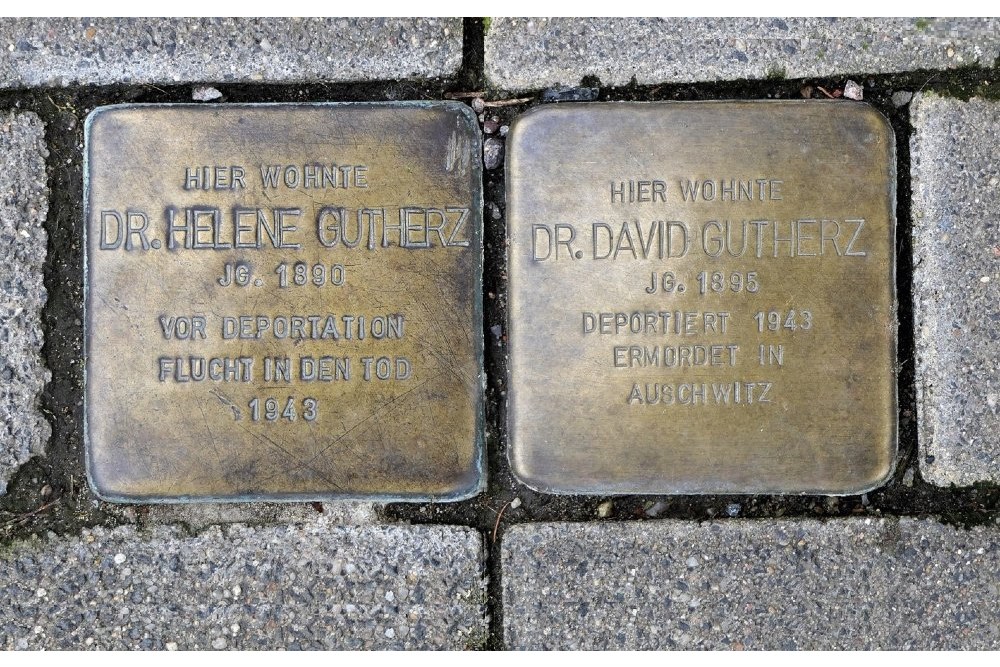Stumbling Stones Bahnhofstraße 51
These small brass memorial plaques (Stolpersteine or stumbling stones) commemorate:
* Dr. Helene Gutherz, born 1890, before deportation escaped into death [committed suicide], 1943.
* David Gutherz, born 1895, deported 1943, murdered in Auschwitz.
Background
Helene (Hennie) Glasberg and David Gutherz married. Both were doctors. They, with a child, moved to Berlin in 1936. After she was banned from practicing medicine, in 1939 she became a nurse for Jewish patients. In 1943 David, Helene, and her sisters were taken to the former Jewish retirement home on Grosse Hamburger Straße. The Nazis had turned the building into a collection camp (Sammellager) from which Berlin Jews would be deported. In early March, Dr. Helene Gutherz killed herself with sleeping pills rather than be separated from her husband. The following week, Dr. David Gutherz was deported on 12 March to Auschwitz. No information was found about their child.
"Stolpersteine" is an art project for Europe by Gunter Demnig to commemorate victims of National Socialism (Nazism). Stolpersteine (stumbling stones) are small, 10x10cm brass plaques placed in the pavement in front of the last voluntary residence of (mostly Jewish) victims who were murdered by the Nazis. Each plaque is engraved victim’s with the name, year of birth, and place (mostly a concentration camp) and date of death. By doing this, Gunter Demnig gives an individual memorial to each victim. One stone, one name, one person. He cites the Talmud: "A human being is forgotten only when his or her name is forgotten."
A reference was found to research done by students at the Lessing-Gymnasiums Döbeln on the story of the Gutherz family, but their story was not found online.
Do you have more information about this location? Inform us!





